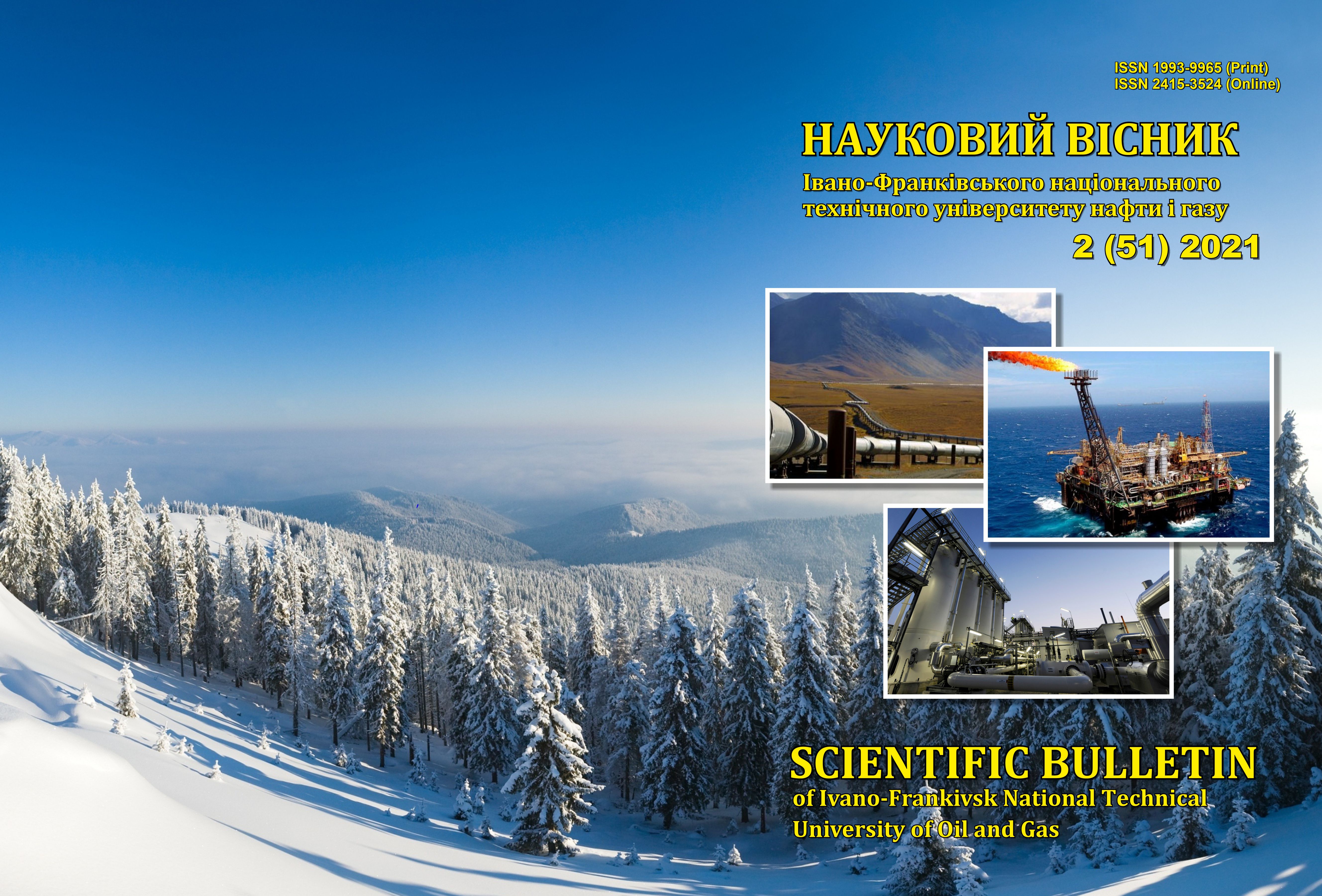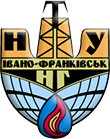Визначення характеристик струминного насоса при його асиметричному обертанні в свердловині
DOI:
https://doi.org/10.31471/1993-9965-2021-2(51)-55-65Ключові слова:
свердловинний струминний насос, відносний напір, коефіцієнт інжекції, напірна та енергетична характерис-тика.Анотація
На основі використання закону збереження моменту кількості руху рідини паралельних змішуваних потенціальних потоків з лінійним розподілом тангенціальних швидкостей і радіальним зміщенням відносно осі свердловини запропоновано гідравлічну модель робочого процесу низьконапірного струминного насоса для умов його асиметричного обертання. В ході виведення рівняння напірної характеристики низьконапірного струминного насоса при його асиметричному обертанні в свердловині використано закон збереження енергії потоку у вигляді рівняння Бернуллі та закон збереження суцільності змішуваних течій. Для характеристики нерівномірного розподілу кінематичних параметрів у камері змішування струминного насоса введено коефіцієнт нерівномірності у вигляді співвідношення середніх та осьових колових швидкостей змішуваних потоків. Витрати робочого, інжектованого та змішаного потоків визначаються шляхом інтегрування прийнятих профілів швидкостей у вхідному та вихідному перерізах камери змішування струминного насоса. Розроблена гідравлічна модель дала змогу отримати безрозмірну відносну форму рівняння для визначення додаткового напору струминного насоса, викликаного його асиметричним обертанням у свердловині. Величина додаткового динамічного напору зростає зі збільшенням колової швидкості та зменшенням швидкості робочого потоку. Повний напір, створюваний струминним насосом, розраховується шляхом сумування додаткового напору та напору, отриманого для нерухомої ежекційної системи. Обертання свердловинної ежекційної системи викликає зростання напору та коефіцієнта корисної дії струминного насоса. Запропонована гідравлічна модель може використовуватись для підвищення ефективності прогнозування режиму роботи струминного насоса у складі компоновок для буріння та очищення вибою свердловин
Завантаження
Посилання
Murphy D. Practical engineering approach to running bit. What factors affect drilling rate. Oil and Gas. 1969. Vol.17. № 11. P.33–35.
Zhu H. Y., Liu Q.Y. Pressure drawdown mechanism and design principle of jet pump bit. Scientia Iranica B. 2015. No 22(3). P. 792–803.
Suryanarayana P. V., Hasan K., Hughes W.I. Technical Feasibility and Applicability of a concentric jet pump in underbalanced drilling. SPE/IADS Underbalanced Technology Conference and Exhibition, Houston, USA, 11-12 October 2004. SPE/IADS 91595. 20 p. https://doi.org/10.2118/91595-MS.
Coll B., Laws G., Jeanpert J., Sportelli M., Svoboda C., Trimble M. Specialized Tools for Wellbore Debris Recovery. Oilfield Review. 2012. Vol. 24. No. 4. P. 46–57.
Haughton D.B., Connell P.L. Reliable and Effective Downhole Cleaning System for Debris and Junk Removal. SPE Asia Pacific Oil & Gas Conference and Exhibition, Adelaide, Australia, September 11–13, 2006. 9 p. SPE 101727-MS. https://doi.org/10.2118/101727-MS.
Kryzhanivskyi Ye.I., Panevnyk D.O. Optimization of design and mode parameters of the well ejection system. Oil and gas power engi-neering. 2020. No 1(33). P. 73–80. https://doi.10.31471/1993-9868-2020-1(33)-73-80. [in Ukrainian]
Panevnyk D.A., Panevnyk A.V. Improving the Energy Efficiency of the Use of Borehole Jet Pumps. ENERGETIKA. Proceedings of CIS higher education institutions and power engineering associations. 2020. Vol. 63. No 5. P. 462-471. https://doi.org/10.21122/1029-7448-2020-63-5-462-471 [in Russian]
Sokolov E.Ya, Zinger N.M. Struynyie apparatyi. M.: Energoatomizdat, 1989. 352 р. [in Russian]
Yong H., Lihong Z., Deyong Z., Hualin L., Jinying W., Jinshen Y., Yugang Z., Zhibin, W. Study on structure parameters of reverse circulation drill bit secondary injector device based on injector coefficient. IADC/SPE Asia Pacific Drilling Technology Conference, Singapore. 22–24, 2016. 22-24. https://doi.10.2118/180539-MS.
Yapici R., Aldas K. Optimization of water jet pumps using numerical simulation. Journal of Power and Energy. 2013. No 6. P. 438–449. https://doi.10.1177/0957650913487529.
Samad A., Nizamuddin M. Flow analyses inside jet pump for oil wells. International Journal of Fluid Machinery and Systems. 2013. Vol.6. No 1. P. 1–10. https://doi.org/10.5293/IJFMS.2012.6.1.001.
Kryzhanivskyi Ye.I., Panevnyk D.O. The study on the flows kinematics in the jet pump’s mixing chamber. Науковий вісник НГУ. 2019. No 1. P. 62–68. https://doi.org/10.29202/nvngu/2019-1/7.
Zhu H. Y., Liu Q.Y., Wang T. Reducing the bottom-hole differential pressure by vortex and hydraulic jet methods. Journal of Vibroengineering. 2014. No 8. Р. 2224–2249.
Chen X., Gao D., Guo B. A method for optimizing jet-mill-bit hydraulics in horizontal drilling. SPE Iournal. 2016. No 4. SPE 178436. P.416–422. https://doi.org/10.2118/178436-PA.
Panevnyk O.V., Kontsur I.F., Panevnyk D.O. Vyznachennia ekspluatatsiinykh parametriv prystroiu dlia ochyshchennia vyboiu sverdlovyny. Naftohazova haluz Ukrainy. 2016. No 2. Р.20–23. http://elar.nung.edu.ua/handle/123456789/3848. [in Ukrainian]
Domagała M. Simulation of cavitation in jet pumps. Technical transactions mechanics. 2013. No 1-М. P. 51-58.
##submission.downloads##
Опубліковано
Як цитувати
Номер
Розділ
Ліцензія
Авторські права....


1.png)

















